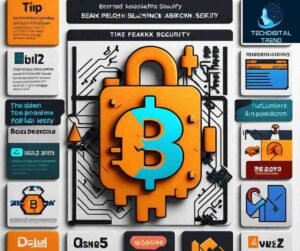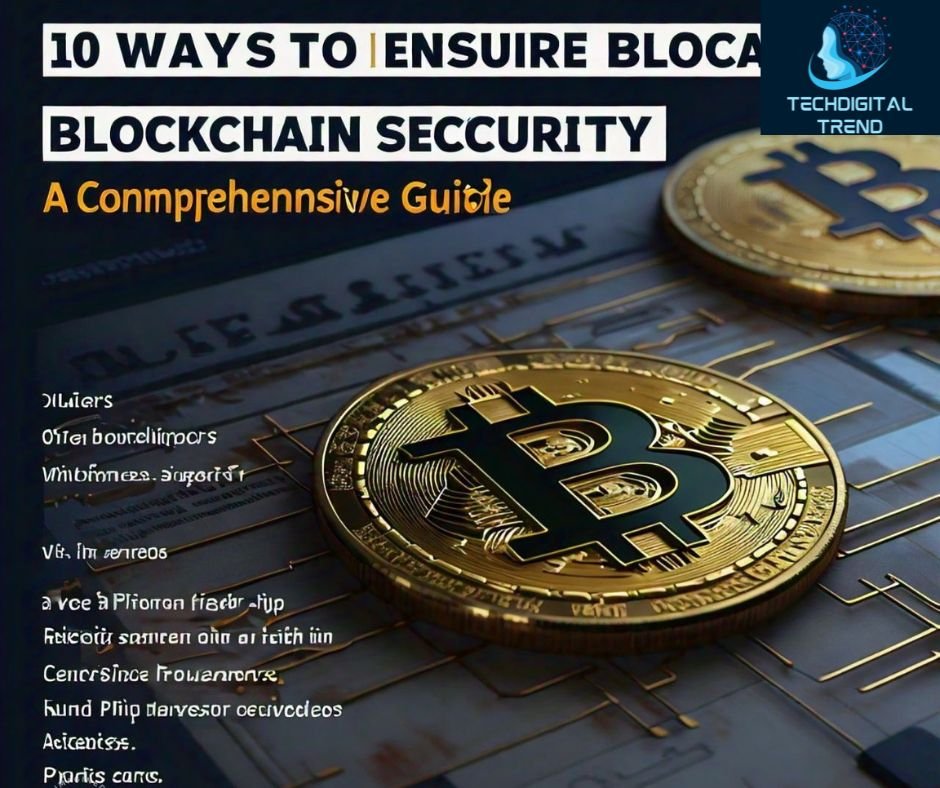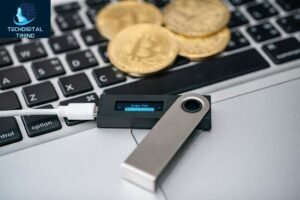Table of Contents
ToggleBlockchain Security
The way we think about security has completely changed because to blockchain technology. Blockchain offers a safe method for storing and transferring data through the use of a distributed, decentralized ledger. But as the sector develops, blockchain security is becoming more and more crucial.
Blockchain technology is a disruptive force in the field of decentralized networks and digital commerce. With its assurance of safe, open, and unchangeable documentation, it has become a mainstay in some sectors, including supply chain management and banking. Nonetheless, blockchain is susceptible to security risks just like any other technology. Implementing recommended practices and taking a proactive stance is necessary to protect blockchain networks and transactions from malevolent actors. We look at 10 crucial methods in this extensive tutorial to guarantee blockchain security.
Common Blockchain Security Threats
Here are some common blockchain security threats:
- Phishing Attacks: Scammers try to steal private keys or login credentials.
- Smart Contract Vulnerabilities: Weaknesses in smart contracts can be exploited.
- Wallet Hacking: Crypto wallets can be hacked, resulting in stolen funds.
- Attacks by Malware: Sensitive data can be stolen via malware.
- Denial of Service (DoS) Attacks: Overwhelming a network with traffic to make it unavailable.
- 51% Attacks: Controlling a majority of the network’s mining power to manipulate transactions.
- Whale Phishing: Targeting high-value accounts with sophisticated phishing attacks.
- Social engineering is the practice of tricking someone into disclosing private information.
Side-Channel Attacks: Exploiting information about the implementation of a system. - Quantum Computing Attacks: Using quantum computers to break encryption.
- Replay Attacks: Reusing valid transactions to exploit vulnerabilities.
- Man-in-the-Middle (MitM) Attacks: Intercepting and altering transactions.
How to Protect Your Blockchain Assets

Here are some ways to protect your blockchain assets:
- Use Strong Passwords: Use unique and complex passwords for all accounts.
- Put two-factor authentication (2FA) into action: Put in an additional security measure.
- Keep Software Up-to-Date: Ensure all software is updated with the latest security patches.
- Use a Reputable Wallet: Choose a well-established and secure crypto wallet.
- Watch Out for Phishing Scams: Make sure emails and websites are legitimate.
- Use a VPN: Encrypt your internet connection to protect against eavesdropping.
- Use a Hardware Wallet: Store your private keys securely offline.
- Monitor Your Accounts: Regularly check your accounts for suspicious activity.
- Educate Yourself: Keep up with the most recent security precautions and dangers.
- Use Multi-Signature Wallets: Require multiple signatures for transactions.
- Use Cold Storage: Store assets offline in a secure location.
- Use Encryption: Protect data with encryption.
- Use Secure Nodes: Use secure nodes to validate transactions.
- Use Regular Security Audits: Perform regular security audits to identify vulnerabilities.
- Use Secure Protocols: Use secure communication protocols like HTTPS and SSH.
- Use Secure Key Management: Manage private keys securely.
- Use Regular Software Updates: Keep software up-to-date with the latest security patches.
- Use Secure Wallets: Choose reputable and secure crypto wallets.
- Be Cautious of Public Wi-Fi: Avoid using public Wi-Fi for sensitive activities.
- Use Two-Factor Authentication: Add an extra layer of security with 2FA.
- Monitor Your Credit Report: Check your credit report for suspicious activity.
- Use a Firewall: Block unauthorized access to your network.
- Use Intrusion Detection: Detect and alert on potential security threats.
Best Practices for Blockchain Security
The following are some top tips for blockchain security:
- Use Secure Protocols: Use secure communication protocols like HTTPS and SSH.
- Use Secure Key Management: Manage private keys securely.
- Use Regular Software Updates: Keep software up-to-date with the latest security patches.
- Use Secure Wallets: Choose reputable and secure crypto wallets.
- Be Cautious of Public Wi-Fi: Avoid using public Wi-Fi for sensitive activities.
- Use Two-Factor Authentication: Add an extra layer of security with 2FA.
In conclusion,
A crucial component of the sector that needs consideration and action is blockchain security. Organizations and individuals may safeguard the integrity of the blockchain network and their cryptocurrency holdings by being aware of frequent dangers and implementing the appropriate safety measures. Recall that maintaining awareness is essential as security is an ongoing effort. Preventing assaults and guaranteeing the security of blockchain assets may be achieved by putting best practices into effect, such as creating strong passwords, turning on two-factor authentication, and updating software.
A multifaceted strategy that takes into account organizational and technological factors is needed to ensure blockchain security. Organizations may improve the security of their blockchain networks and transactions by putting the 10 measures listed in this book into practice, protecting against possible threats and weaknesses. To fully utilize blockchain technology, proactive precautions are necessary since security is of utmost importance in the digital era. Stay safe and secure in the blockchain world!
Open this link: Tap to here














